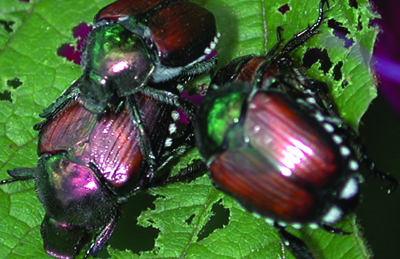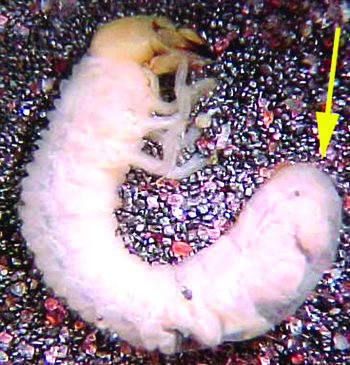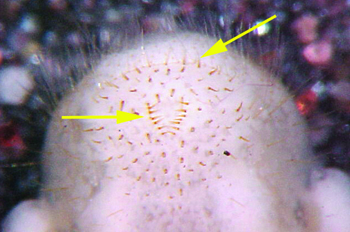Japanese beetle
July 30, 2015
Popillia japonica
Host range
Around 300 different species. Lindens, red-leaf and variegated cultivars of Norway maple, wild grape, as well as members of the family Rosaceae (amelanchier, crabapples, mountain ash, purple leaf plum, roses and others) are particularly favored.
Look for adult beetles in late June to early July, as littleleaf linden begins bloom and Hills of Snow hydrangea is in full bloom. Adults often feed in a group, skeletonizing leaves with only a network of veins remaining when feeding damage is heavy. Larvae damage roots of turf.

Japanese beetle adults can be confused with the false Japanese beetle (Strigoderma arboricola) and rose chafers. Although all three have copper colored wing covers, only Japanese beetle has tufts of white hairs along the outer edge of the abdomen.
Management
Beetles are attracted to plants damaged by feeding, so control damage early. Pheromone traps and bait traps are not recommended as a strategy for trapping out beetles. Traps contain a floral lure to attract female beetles and a pheromone to attract males. It is possible to draw in more beetles from surrounding areas and to have greater damage resulting, particularly if traps become full.


Typical white grub; arrow at raster. Rastral patterns are used to ID grubs. Right photo: Anal slit is straight, pali (bottom arrow) less than 14. See the MSU plant diagnostic clinic web site for more detailed information on identifying grubs: Identifying Common White Grubs in Michigan.
Print a PDF of this page: Japanese beetle



 Print
Print Email
Email



